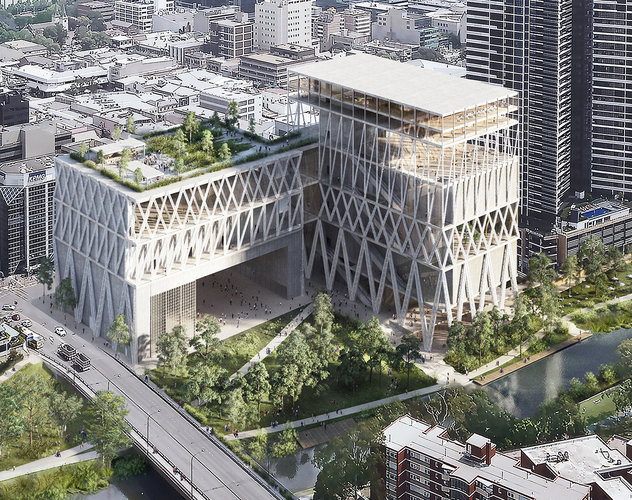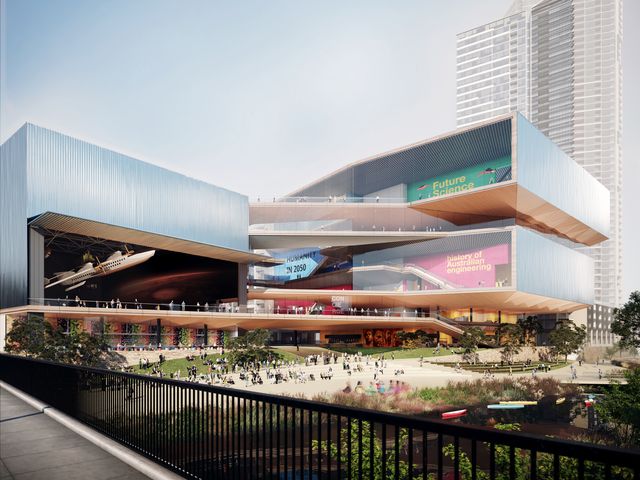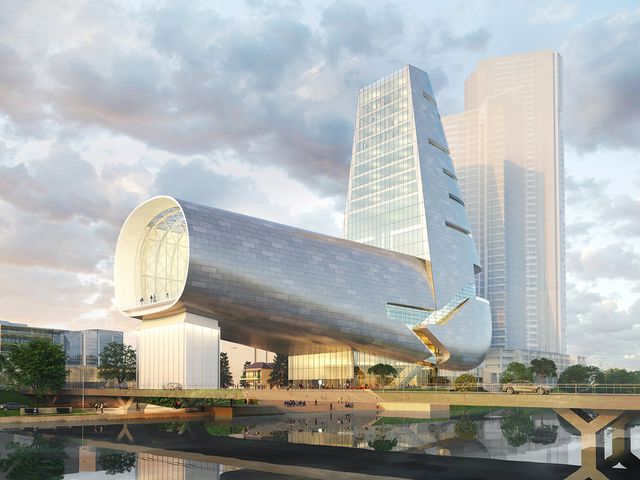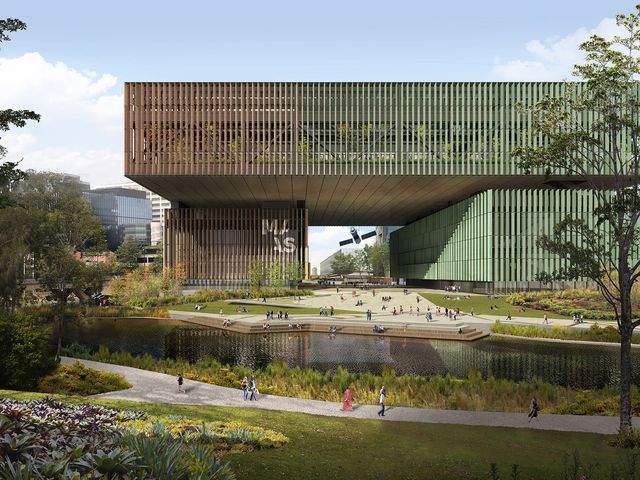
A building that would have raised exhibition spaces above the flood zone and one that would have saved two heritage sites from destruction were both knocked back by judges deciding on the new Parramatta Powerhouse Museum.
The finalists in an international competition to select the designer of the relocated museum have been revealed six months after the winner was announced.
An Enivronmental Impact Statement also released this week gives the go-ahead for construction of the winning design, which will include demolishing two historical buildings.
Among the four designs that didn’t make the final cut was a “beautiful and poetic” design submitted by AL_A and Architectus, which would have lifted the exhibition spaces out of the flood risk zone.
However, the judges noted “operational concerns” with the suggested layout and apprehensions about the practicalities of the proposed façade and the building’s environmental strategy.

Meanwhile, an offering by US firm Steven Holl and Australia’s Conrad Gargett would have retained the two heritage buildings for cafes or restaurants.
But the judges said this didn’t seem compatible “with any argument for retention” and described the juxtaposition of the very large museum building and smaller heritage structures as “jarring”.

Bernardes Architecture, from Brazil, and Scale proposed a “distinctly Brazilian approach to public space” but the judges said the building failed to convey “a sense of Parramatta’s DNA” and didn’t quite understand the local culture.
All Australian partnership Chrofi and Reko Rennie broke their design down into a series of separate high-rise buildings which the judges said lacked engagement with local communities.

The judges also expressed concern about plans to put a basement in the flood plane, which they said would be susceptible in a worst-case flood event.
The state government on December 17 announced a French-Australian architectural partnership as the winners after they submitted plans for “a hyper-platform” stilted building opening towards the Parramatta River.

The EIS appraising the development application for the building notes the site of the proposed new museum is subject to flooding as it sits within the Upper Parramatta River Catchment. But it says a risk report found the design of the building didn’t present any increased risk to public safety.
It also notes that two heritage buildings dating back to the 1800s, Willow Grove and St Georges Terraces, will have to be demolished to make way for the new museum.
The report concludes that the potential impacts of the development are acceptable and “given the planning merits of the proposal, the proposed development warrants approval by the Minister for Planning and Public Spaces”.
Comment below to have your say on this story.
If you have a news story or tip-off, get in touch at editorial@governmentnews.com.au.
Sign up to the Government News newsletter
It is true that the potential impacts of the development are acceptable to an extent.
How ironic that an entry was thought ‘not to convey “a sense of Parramatta’s DNA” ‘ when the heritage properties which will be demolished are in fact Parramatta’s DNA. Historically, NSW Liberal governments have always been big on knocking down anything that is old unlike more enlightened European cities.
NSW governments have a long track track record both of: demolishing/approving demolition of anything that smacks of “colonial history” – including beautiful old sandstone buildings
AND
refusal/rejection of its responsibility to maintain the state’s historic buildings in regional towns – the architecturally, historically, culturally and socially important Old Court House in Armidale, NSW – built in 1859 – being just one example. Essential maintenance and repair work was “discontinued” even before the decision to build the new court house which was finally constructed after a cost blowout and the contractor’s going bankrupt.
Since the opening of the new court house, the beautiful old “colonial” building in the main Mall, has been repeatedly vandalised and its state of decay persistently ignored – even exacerbated- by blatant coalition government neglect. Large cracks in its facade are galloping in all directions. Plaster is falling off in chunks. Windows broken by vandals have been boarded up and not replaced. The condition of its interior continues to deteriorate.
The coalition government refuses to restore it and gift it to the people of Armidale and surrounding rural areas. It has more than once tried to flog it off – but no offers.
And now two more “historical buildings” are to be demolished – in Parramatta – to be replaced by yet another taxpayer funded multi-billion dollar building that will be locationally more difficult for most people to access.
Is the old Powerhouse and site to be flogged off – to be yet another victim of the coalition government’s campaign of privatising everything that is publicly owned?
It seems that colonial history and architecture are so irrelevant to NSW governments that they can be erased. Yet anything that is claimed to be “aboriginal” is revered.
Is that not racial discrimination?
Margaret
The Holl and Gargett proposal which is the one I think got up looks like a giant asthma puffer or a bong.I also agree with what Cliff and Margaret said about the historical aspect of the heritage buildings. If they must be removed why not relocate them to an area near the site while staying in the immediate vicinity This has been done before within the scope of other projects carried out in the past and as said utilise them in some other fashion eg aboriginal learning centres
You cannot erase history nor the past and if we do we are all doomed to failure
as someone once said
The justification for rejecting the proposal that retained the existing buildings as “jarring” is either ignorance or complicity. Anyone interested in architecture would be aware of the juxtaposition of the Hancock Tower and the historic church in Boston. I have photos showing how the bigger building becomes a mirror for both the church and the environment, especially the glorious sky effects which can create a dynamic viewing space.
I agree here also with what Ian has said here. There are plenty of examples of juxtapositional buildings around the world you only need to go as far as Melbourne to see a number of examples where historical buildings including churches are juxtaposed against the modern in particular high rise buildings. Me thinks there is more to this than meets the eye